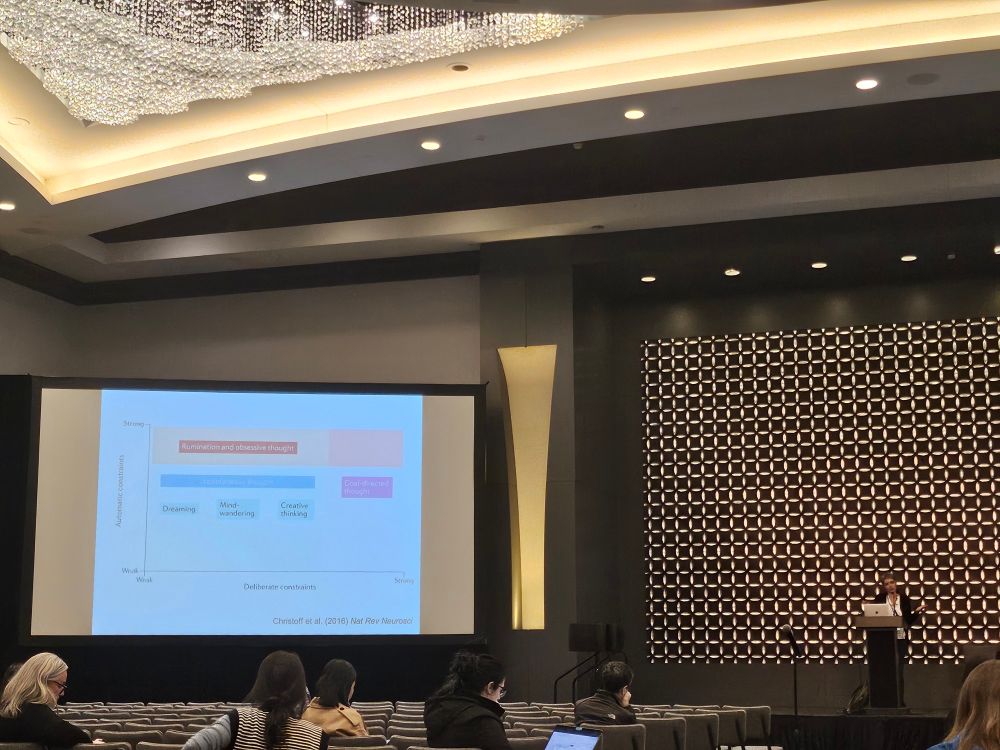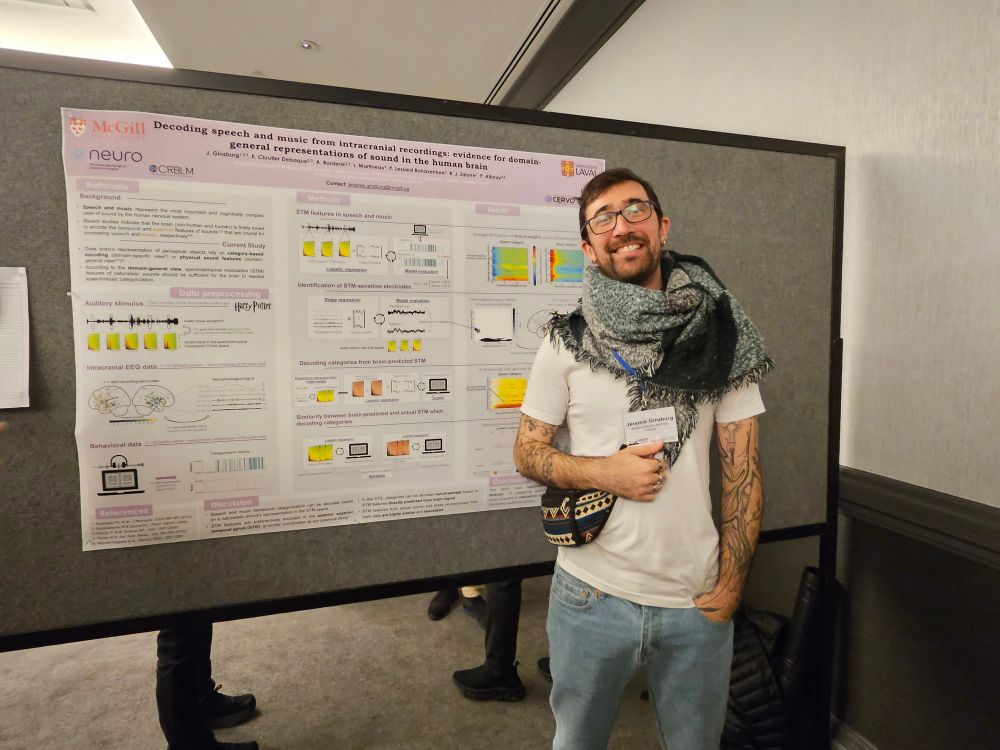
Talk 5 by Prof. Kalina Christoff is sharing insights based on the dynamic framework of thought and emphasizing on the subcortical-to-cortical interaction within the type A DMN about the neural correlates of the spontaneous thoughts.

Talk 5 by Prof. Kalina Christoff is sharing insights based on the dynamic framework of thought and emphasizing on the subcortical-to-cortical interaction within the type A DMN about the neural correlates of the spontaneous thoughts.
Talk 4 by Yuhua Yu @yuhuay.bsky.social
They use a think-aloud paradigm and a hidden-Markov model to investigate the temporal dynamics of spontaneous thoughts to address the challenges of integrating content and dynamics across time✨

Talk 4 by Yuhua Yu @yuhuay.bsky.social
They use a think-aloud paradigm and a hidden-Markov model to investigate the temporal dynamics of spontaneous thoughts to address the challenges of integrating content and dynamics across time✨
Talk 3 by Prof. Matthias Mittner
They investigate attentional switches from a combined fMRI and pupilometry study based on a theoratical model with NE activity and develop a probed hidden-Markov model to predict the mental state on-off.

Talk 3 by Prof. Matthias Mittner
They investigate attentional switches from a combined fMRI and pupilometry study based on a theoratical model with NE activity and develop a probed hidden-Markov model to predict the mental state on-off.
Symposium 9 Talk 2
Prof. Aaron Kucyi is sharing the preliminary results under the topic of “predicive neural modeling of resting-state spontaneous though” with neural data from 3 intensively-sampled individuals.

Symposium 9 Talk 2
Prof. Aaron Kucyi is sharing the preliminary results under the topic of “predicive neural modeling of resting-state spontaneous though” with neural data from 3 intensively-sampled individuals.
Symposium 9 Talk 1 by Julia Kam from the University of Calgary is sharing insights from EEG signals about neural oscillatory signatures of ongoing thoughts during naturalistic tasks.

Symposium 9 Talk 1 by Julia Kam from the University of Calgary is sharing insights from EEG signals about neural oscillatory signatures of ongoing thoughts during naturalistic tasks.
Etienne Abassi from @zatorrelab presented his latest work using intact/scrambled music pieces to explore the cognitive mechanisms underlying auditory scene analysis focusing on the influence of social context and musical structures in 🎵 conversations!

Etienne Abassi from @zatorrelab presented his latest work using intact/scrambled music pieces to explore the cognitive mechanisms underlying auditory scene analysis focusing on the influence of social context and musical structures in 🎵 conversations!
Jeremie Ginzburg from @zatorrelab presented their work with intracranial recordings using Harry Potter audio materials to decode speech and music these two categories. They found that the categorization relies primarily on the spectrotemporal features of sound!

Jeremie Ginzburg from @zatorrelab presented their work with intracranial recordings using Harry Potter audio materials to decode speech and music these two categories. They found that the categorization relies primarily on the spectrotemporal features of sound!
Matthew Singh presented their amazing individualized modeling study entitled “Precision brain modeling reveals a bifurcation mechanism and local circuitry underlying individual differences”. Ref: www.pnas.org/doi/10.1073/...

Matthew Singh presented their amazing individualized modeling study entitled “Precision brain modeling reveals a bifurcation mechanism and local circuitry underlying individual differences”. Ref: www.pnas.org/doi/10.1073/...

